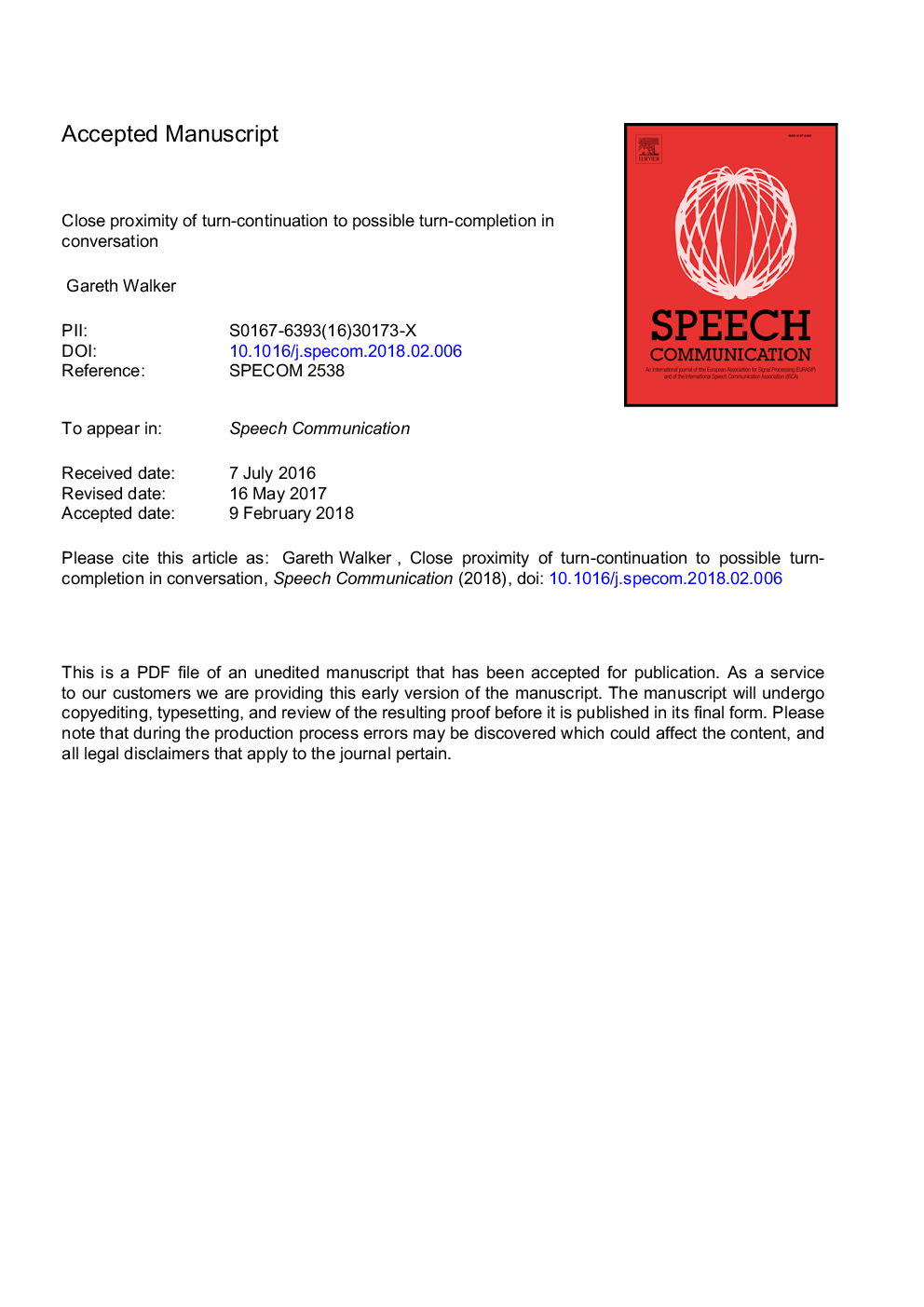| Article ID | Journal | Published Year | Pages | File Type |
|---|---|---|---|---|
| 6960590 | Speech Communication | 2018 | 27 Pages |
Abstract
Speakers in conversation are in the first instance allocated the space in which to produce a single unit of talk which could figure as a complete turn. One way speakers can continue talk beyond a point of possible turn-completion is by producing a continuation in maximally close proximity to the point of possible turn-completion. This article extends our understanding of how speakers do this, and to what interactional effect. Several phonetic features characterising close-proximity continuations are described. These include continuation of voicing, articulatory anticipation and other phonetic features. It is argued that close-proximity continuation helps ensure speakers get to continue their turn past a point of possible turn-completion. This argument is supported by close inspection of the talk leading up to the point of possible turn-completion, the start of the continuation, and the responses of co-participants - especially with regard to whether the point of possible turn-completion engenders incoming talk or not. The method combines analysis of phonetic and sequential details of 240 points of possible turn-completion in audio recordings of unscripted American English telephone calls.
Related Topics
Physical Sciences and Engineering
Computer Science
Signal Processing
Authors
Gareth Walker,
